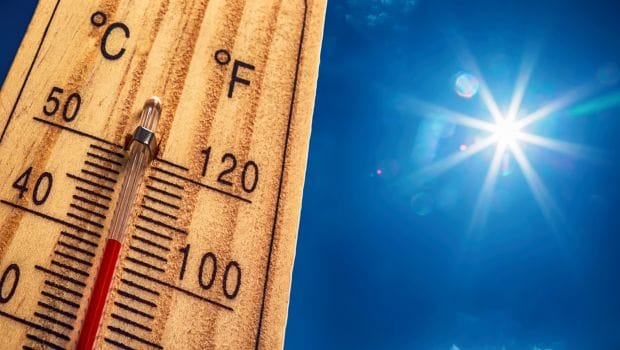How to Naturally Overcome Sarcoidosis with Ayurveda: A Holistic Healing Approach
Abstract
Sarcoidosis is an inflammatory disease in which tiny collection of granulomas, or clumps of inflammatory cells got formed in any part of the body — most commonly the lungs and lymph nodes, but it can also affect the eyes, skin, heart and other organs. According to Ayurveda, when vata reaching the external channels, it also affects kapha-pitta-rakta and becomes obstructed by them in the way. While spreading vata causes swelling or inflammation with the character of protuberance. By balancing our Tri-doshas (three fundamental energies) one can get rid of sarcoidosis. In this article we are going to discuss, how we can get rid of sarcoidosis naturally with Ayurveda.

Introduction
Sarcoidosis is an inflammatory disease. Inflammation is one of the complex biological responses of body tissues to harmful stimuli, such as pathogens, damaged cells and is a protective response which involves immune cells, blood vessels, and molecular mediators. It is a disorder related to autoimmune disorders or may be triggered by body’s immune system responding to foreign substances, such as viruses, bacteria, or chemicals.
Causes
Exact cause of sarcoidosis is not known, but it can results from the body’s immune system responding to an unknown substance. The infectious agents, chemicals, dust and a potential abnormal reaction to the body’s own proteins could be responsible for the formation of granulomas in the person who are genetically predisposed.
In some cases, immune system gets disturbed. They are like-
- Excess smoking
- Alcohol consumption
- Poor nutrition
- Stress
- Inhaling of foreign pollutant particles
According to Ayurveda, causes may include – (Charak Chikitsa- 12/5-6)
- Regular intake of alkaline, sour, irritant, hot and heavy substances
- Excessive use of uncooked food
- Defective and poisoned food
- Lack of movements
- Injury to vitals etc.
Sign and Symptoms
There are some general symptoms which are present, these symptoms are:
- Fatigue
- Swollen lymph nodes
- Weight loss
- Pain and swelling in joints, such as the ankles
- Fever
- Dry mouth
- Nosebleeds
Sarcoidosis sometimes develops gradually and produces symptoms that last for years and other times, symptoms appear suddenly and then disappear just as quickly. Signs and symptoms of sarcoidosis depend on the organs which are affected. These symptoms are:
1. Lung symptoms
Most commonly sarcoidosis affects the lungs. Lung symptoms may include:
- Persistent dry cough
- Shortness of breath
- Wheezing
- Chest pain
2. Skin related symptoms
Sarcoidosis may cause skin problems, which may include symptoms like:
- Rash of red or reddish-purple, which may be warm and tender to the touch
- Disfiguring sores (lesions)
- Growths under the skin (nodules)
- Hair loss
- Raised scars
3. Eyes symptoms
Sarcoidosis can also affect the eyes, so it’s important to have your eyes checked regularly. Eyes symptoms may include:
- Blurred vision
- Eye pain
- Burning and itching in the eyes
- Dry eyes
- There can be severe redness in the eyes
- Eyes are sensitivity to light
- Watering from eyes
4. Cardiac sarcoidosis
When sarcoidosis is related to heart it is known as Cardiac sarcoidosis. The symptoms may include:
- Chest pain
- Dyspnea (shortness of breath)
- Syncope (fainting)
- Fatigue
- Arrhythmias (irregular heartbeats)
- Palpitations (rapid or fluttering heart beat)
- Edema (swelling caused by excess fluid)
5. Nervous system symptoms
Sarcoidosis also affect our nervous system, the symptoms may include:
- Seizures
- Hearing loss
- Headaches
- Sarcoidosis can also affect calcium metabolism, liver, spleen, muscles, bones, joints, kidneys, lymph nodes, or any other organ.
Risk factors
Sarcoidosis can develop in anyone but there are some factors that may increase your risk toward sarcoidosis. They may include:
- Age – Sarcoidosis can occur at any age, but often occurs between the ages of 20 and 60 years.
- Sex – Women are slightly more prone to the disease.
- Race – African and Americans are more chances to develop sarcoidosis.
- Family History – If someone in the family has had sarcoidosis, one can have more chances to develop the sarcoidosis because it travels through genes.
Complications
Sometimes sarcoidosis causes many complications which are as follows:
- Lungs – Untreated pulmonary sarcoidosis can lead to permanent scarring known as pulmonary fibrosis, which cause difficulty in breathing and can also cause pulmonary hypertension.
- Eyes – Sarcoidosis may cause damage to the retina, which can eventually cause blindness. Sarcoidosis also can cause cataracts and glaucoma, but it is rare.
- Kidneys – Sarcoidosis can lead to kidney stones and reduce kidney function. Rarely, this can lead to kidney failure also.
- Heart – Cardiac sarcoidosis can form granulomas in heart which can disrupt heart rhythm, blood flow and normal heart function which can also lead to death.
- Nervous system – Granulomas can also form in the brain and spinal cord causing Inflammation in the facial nerves that can lead to facial paralysis.
Diagnosis
It is very difficult to diagnose sarcoidosis because symptoms of sarcoidosis can be similar to other diseases, such as arthritis or cancer etc. Firstly physical examination should be done, after that diagnostic tests should done which can help to exclude other disorders. The diagnostic tests may include:
- Chest X-ray
- Blood and Urine test
- CT(Computerized tomography)scan of the chest
- ECG (Electrocardiogram)
- Regular eye check-up
- A regular checkup from a cardiologist
- PET (Positron emission tomography) scan
- MRI (Magnetic resonance imaging)
- Lung (pulmonary) function tests
- Biopsy can also be done
Treatment
As, there is no cure for Sarcoidosis in modern science but one can get rid of sarcoidosis naturally with the help of Ayurveda.
- Shamshodhan chikitsa (Detoxification process) – Deepan (inflaming the digestive fire) – It is the process which stimulates digestion or enhances digestive fire.
- Pachana (digestion) – It is the process of taking of herbs so you can digest liquefied butter otherwise known as ghee to dissolve fat-soluble toxins.
- Snehan (Oleation Therapy) – It is process of oleation of the body by using medicated oils and ghee externally and by their consumption as well.
- Vamana (Emesis) – It is a procedure in which doshas (waste products or toxins) are eliminated through mouth.
- Virechana (Purgation) – It is the process of inducing bowel movements by herbal combinations, which are taken through mouth, detoxification happens through anus.
- Basti (enema) – It is the procedure in which medicated oil or herbal decoction is administered through the anal route.
Herbal Remedies For Sarcoidosis by Planet Ayurveda
Herbal Remedies For Sarcoidosis by Planet Ayurveda contains 100% natural products which are absolutely free from chemicals, additives, extra colors, fillers and yeast etc. these formulations are purely vegetarian and contain all the pure herbs explained in ancient Ayurvedic texts. These remedies help in balancing all the three doshas – Vata, Pitta, Kapha in body and supports healthy digestive system by maintaining healthy metabolism. The herbal remedies which can help to get rid of sarcoidosis are as follows:
- Curcumin Capsules
- Kanchnaar Guggul
- Aller-G Care
- Punarnava Mandur
Herbal Remedies For Sarcoidosis
Product description
1. Curcumin Capsules
These Curcumin capsules contain standardized extract of curcuminoids present in Haldi (Turmeric) which is responsible for the remarkable properties exhibited by it. These capsules are very versatile which can help to maintain a healthy body and mind. Turmeric may be effective at relieving symptom like pain.
Dosage – 2 capsules two times daily with plain water after meals.
2. Kanchnaar Guggul
Planet Ayurveda’s Kanchnaar guggul contains, Guggul (Commiphora mukul) and Kachnaar (Bauhinia variegata).This remedy reduces inflammation and swelling and provides relief from the painful condition and also proved to subside any kind of extra growth in body.
Dosage – 2 tablets three times per day with plain water after meals.
3. Aller-G Care
The name of this remedy itself clears that these capsules will act as anti allergens. Aller-G Care contains Ashwagandha (Withania somnifera), Neem (Azadirachtaindica), Haridra (Curcuma longa) and Shirish (Albizialebbeck).These capsules helps in supporting a healthy lung function and maintaining normal breathing, which is helpful in dealing with symptoms of Sarcoidosis like Chest pain, Shortness of breath etc.
Dosage – 2 capsule two times in a day with plain water after meals.
4. Punarnava Mandur
Punarnava Mandur contain the herbs such as Punarnava (Boerhaviadiffusa), Trivrit (Operculinaturpethum), Shunthi (Zingiber officinale), Pippali (Piper longum), Marich (Piper nigrum) etc. This herbal remedy is one of the best herbal remedies which is very effective in swelling or inflammation and also helps to eliminate toxins out from the body.
Dosage – 2 tablets two times a day with plain water after meals.
Home remedies
- Walk for at least 30-45 min daily
- Skipping of meals should be avoided.
- One should drink at least 8-10 glass of water regularly
- One should take a diet which should be rich in nutritional value
- Take less amount of fat or processed sugar diet
- Avoid alcohol
- Stop smoking (because smokers are more common for pulmonary sarcoidosis)
- Regularly go for checkups
- Soaked almond 5 pieces daily
Conclusion
Some of people which are suffering from sarcoidosis are left with some permanent lung damage, and in some of the patients the disease is chronic. In some cases death from sarcoidosis can also occur and this disease causes serious damage to vital organs, such as the brain, lungs, or heart as well. Modern medications can cause side effects like weight gain, insomnia, and difficulty regulating blood sugar etc. but this condition can be managed very well with Ayurvedic treatment because Ayurveda thinks different from the modern treatment. With the help of Ayurveda one can get rid of sarcoidosis without facing any side effect. So, isn’t Ayurveda is the best way to get rid of sarcoidosis???







